‘One of the most devastating weather events to hit Raro’
Saturday 16 July 2022 | Written by Matthew Littlewood | Published in Features, Weekend
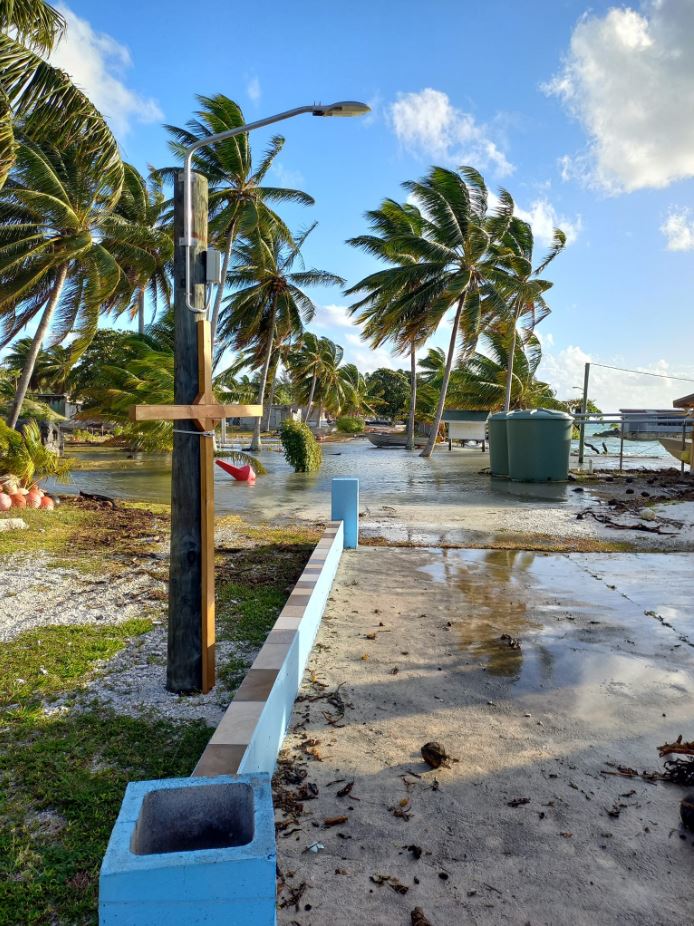
Sea surge reaches over and beyond the foreshore in Manihiki. PC: JEANMARIE WILLIAMS/22071543
The heavy swells which battered the Southern Coast of Rarotonga were one of the most destructive weather events the island has ever seen. Matthew Littlewood talks to the authorities about the response.
It happened so quickly. From the warnings on Monday morning from the Cook Islands Meteorological Service to the destruction of Tuesday and Wednesday, it’s been a busy week for emergency services and weather observers.
The combination of swells reaching 4.5 metres on Tuesday in the southern end of Rarotonga has led to damage to many homes and accommodation providers.
Some of them, such as The Rarotongan Resort, had to move its guests to other accommodation, with about 40 beachfront rooms now unusable due to damage sustained by the sea surges.
Cook Islands Meteorological Service director Arona Ngari said although this week’s event was not caused by a cyclone, the extent of the damage was comparable to Cyclone Heta in January 2004, which damaged the seawall next to the Met Office in Nikao, Rarotonga.
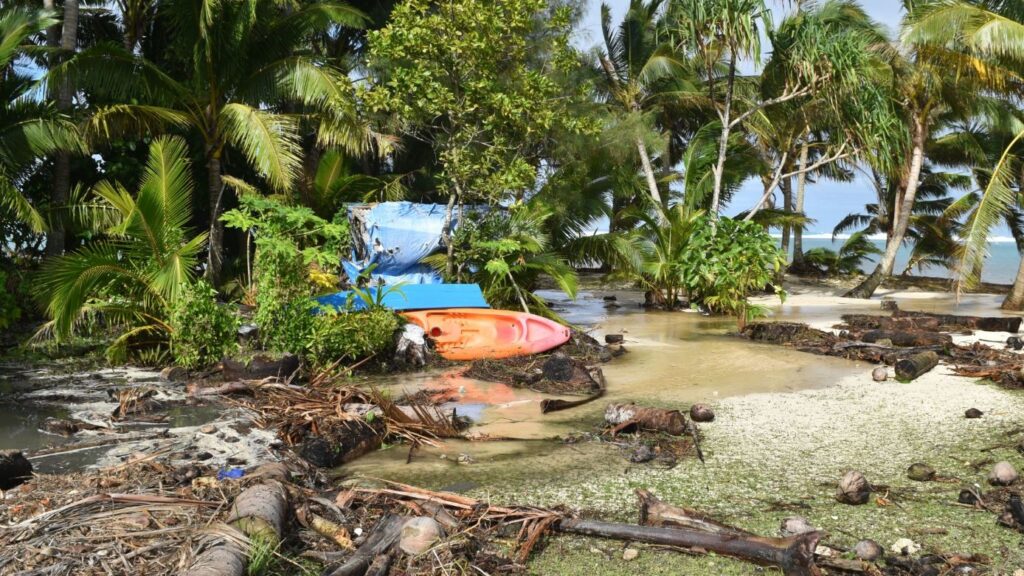
“It has certainly been chaotic this week,” Ngari said.
Ngari said there had been a “marked difference” between the waves at the southern end of Rarotonga and the north end of Rarotonga.
“In the south end, the tide reached as high as 4.5m, whereas in the north end, there were people still swimming in the water.”
Ngari said the Met Service put out warnings about the incoming swells well ahead of time.
“They were there for people to access online, on the radio or in the newspaper. However, we accept some home owners and hotel operators may have not seen them,” he said.
Ngari said the event was caused by a high-pressure system arriving from New Zealand, which in turn led to the high swells in the southern part of the island and other islands in the group.
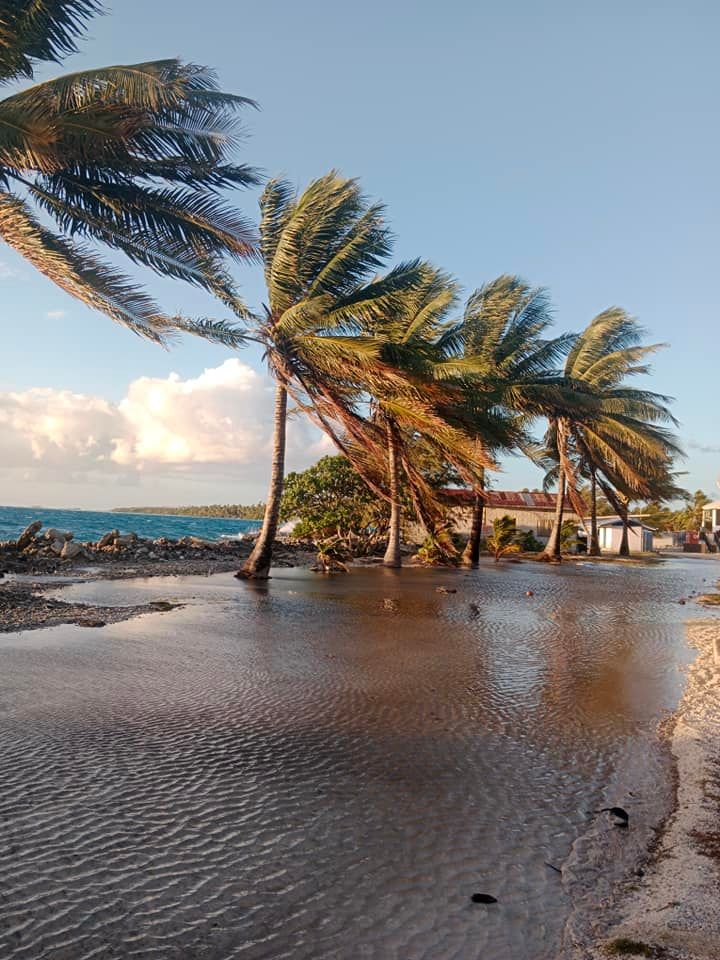
“I liken it to throwing a pebble into the sea. You see the ripples go out, until you hit a barrier, and a backlog of swells would only enhance the oncoming swells, and even further enhancement comes when this coincides with high tides, and that’s exactly what happened here,” Ngari said.
“Information is there for the general public and if there is a way that we can improve the situation of future similar events, we are willing to hear them and discuss a way forward.”
Ngari said the situation had abated enough that it would be removing its swell warnings on Saturday.
Red Cross Cook Islands general secretary Fine Arnold said the volunteers were able to get to many of the affected homeowners on Wednesday morning.
“There were some whose lives have been totally upended,” Arnold said.
“The waves pretty much went right through their homes.”
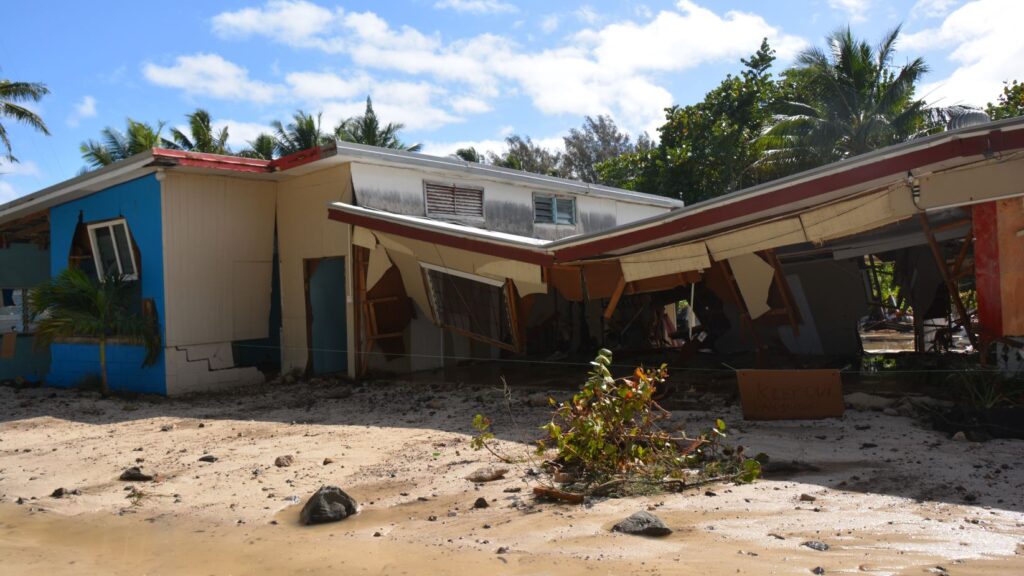
Arnold said over the past week, the Red Cross has compiled a list of homeowners who might need extra supplies such as kitchen sets.
“We can’t do much in terms of fixing the infrastructure of these houses, but we can offer them a shoulder to lean on during this difficult period,” she said.
“We were surprised by how quickly it all happened. We didn’t feel like we had enough warning.”
Cook Islands Tourism Corporation chief executive Karla Eggelton said the event was devastating for many businesses.
“This is a very tough time right now for many who have been affected both personally and professionally by the immediate impact of the king tides,” Eggelton said.
“At a time when tourism businesses are getting back on their feet and experiencing positive growth and demand for visitor goods and services, this is a devastating blow to recovery both individually and collectively.”
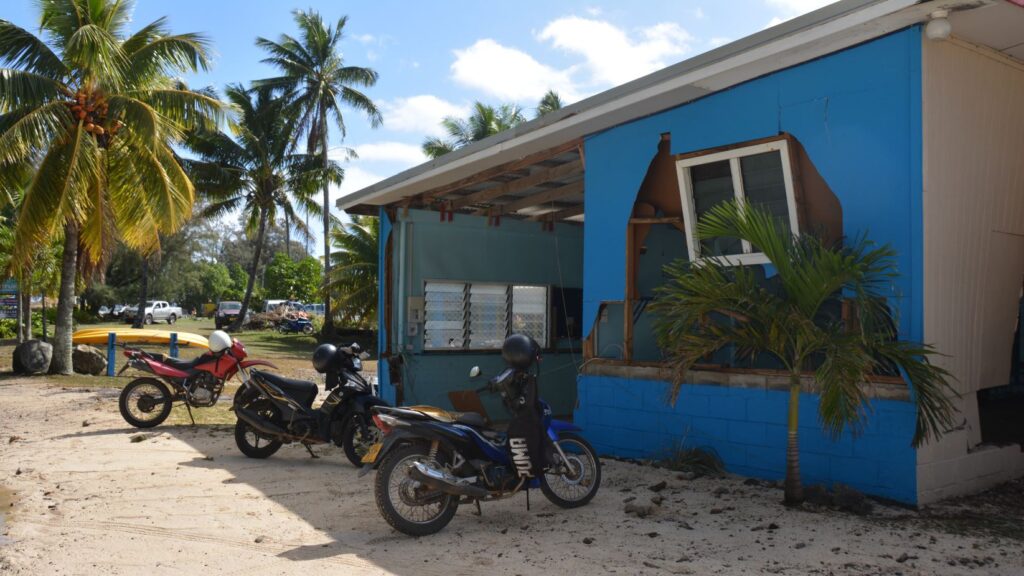
Eggelton is reaching out to tourism operators to complete a survey about the effects of the weather event, so the Corporation can assess what assistance is needed. Staff will also meet with businesses to get an idea of the impacts.
“The objective of this survey is to quantify the damage of the king tides on tourism businesses and determine the financial impact on individual and collective businesses,” she said.
“We hope to gain insight into the threat and extent of sea surge damage to coastal businesses, so we can strengthen and improve mechanisms for support and recovery.”
Office of the Prime Minister’s chief of staff Ben Ponia said the emergency teams did well to react quickly once the gravity of the situation was grasped.
“Infrastructure Cook Islands in particularly went beyond the normal call of duty and for example took on managing traffic controls. The Puna Emergency Operation Centres activated their community support networks to be on alert over the night period and to conduct patrols in the village,” Ponia said.

“We are learning that our early warning systems have to give more specific location details: for example, coastal areas on the southern side of Rarotonga would be mostly affected and we need to combine other factors as part of the warning, such as the sea surges would have been at their maximum and exacerbated by the high king tides.”
In the future, the authorities hope to have better information to assist with response times to serious weather events. Emergency Management Cook Islands is working with Cook Islands Investment Corporation to design a National Emergency Operations Centre (NEOC) that will improve inter-agency coordination and communication for disaster management.
Additionally, the Cook Islands Meteorological Services and Climate Change office has begun implementing a Green Climate Fund (GCF) funded project to strengthen early warning systems. Next month the Government will be holding a workshop with National Institute for Water and Atmospheric research (Niwa), from New Zealand, and the Pacific Community (SPC) to improve climate risk assessment modelling.
While Ngari said he was largely satisfied with the Met Service’s response, he said it could be useful to review it to determine what could be done to better respond to future major weather events.
“We accept that it’s been one of the most devastating weather events to hit the island. We weren’t necessarily surprised with the height of the tides, but we were by the sheer chaos of the destruction,” Ngari said.









































